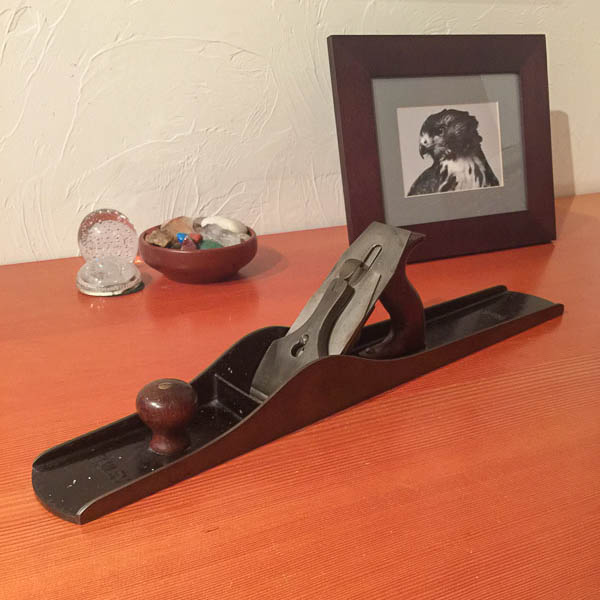I didn’t learn any woodworking from my grandfather Russell, I learned most of what I know from his son, my father John. The techniques and attitudes came pretty directly, nevertheless. I didn’t even get to see Russell’s work until long after he died when I saw the house he built for his family during the 1920s. It was in considerable disrepair, suffering from neglect but not abuse. Looking past the wear and tear I could see the beautiful joinery of the perfectionist I knew. All was done without a retractable steel tape, a compound miter saw, a cordless drill, a laser, nail gun or any of the modern conveniences that make up the 21st century carpenter’s tool kit.
The pace, of course, was very different. Interior trim materials were brought on-site a month before they were used to give the wood time to acclimate to the ambient conditions. Today the same trim is used the day it arrives, and what’s more, probably had birds living in it a couple of weeks before. The use of unpowered hand tools meant slower production, but a greater feel for both the wood and the work. That’s not to say that my grandfather and the carpenters of his day would not have embraced the amazing tools of today. I’m sure that they would have made great use of the modern stuff, but they would have known when to put down the whiz-bang machine to pick up the hand plane, and when to save time by retiring the 5½ point rip saw in favor of something with a motor. My father’s first task when he went to work for Van Lieu and Van Horn was to rip roof sheathing boards by hand. Not just any boards, but the last boards that met at the ridge with matching bevels to form the peak! It was a job that gave him a lasting appreciation of the portable table saw, to say the least.
I’m at home with a cordless impact driver or a compound miter saw, but not the way my father and grandfather were with bench planes. I have since learned to use them more and more as they are a joy <em>if </em>you have the time and the application is right. Below is a 3 patent date Bailey #8 corrugated joining plane obtained through the wonder of eBay. It’s in the neighborhood of 100 years old and in great shape. With its 24″ sole, straightening boards is almost automatic. There’s something about the sound of a sharp iron running along the edge of a board that can’t be matched by a power tool. Of course father and grandfather both would have been none too pleased if I had chosen to wax poetic about hand planes instead of taking advantage of my Powermatic joiner to do the same work in a fraction of the time.
December brings to mind the story of one of my grandfather’s first woodworking chores. The teacher in his one room school house on Sourland Mountain in New Jersey assigned him and another boy to go out and get a nice, big Christmas tree. Off they went with an ax, and came back dragging a tree through the door. The tip of the tree barely made it inside when they rested the trunk on the blackboard’s chalk rail all the way at the opposite wall. It filled the entire room when the branches spread out, making it impossible to pull it back out through the doorway.
Everyone else was sent home while the two “woodsmen” spent the rest of the day cutting the huge tree into parts that could be removed from the building.
Merry Christmas and Happy Holidays!
dvl



Leave A Comment